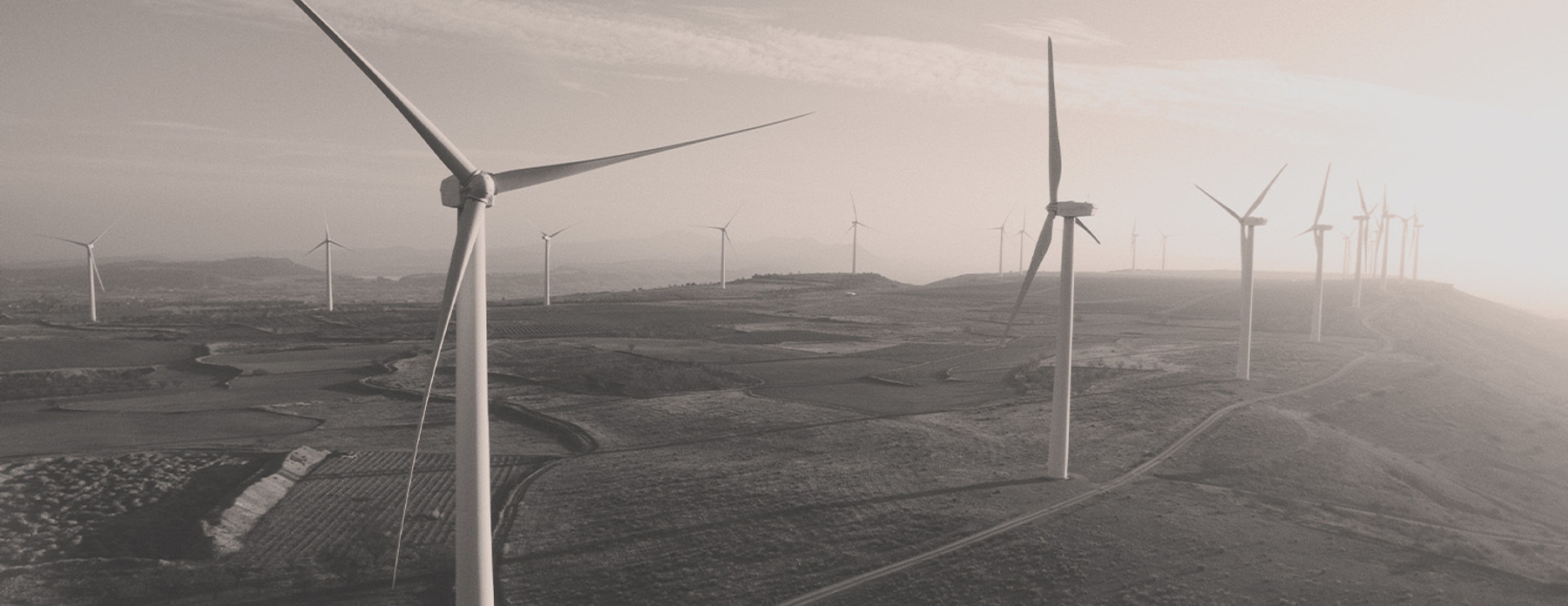
Energy Update: Draft government proposal for an act on offshore wind power in the Finnish EEZ submitted for consultation
Our Energy practice group has been following the progress of the legislative project which aims to clarify the requirements and processes for offshore wind power in the Finnish exclusive economic zone ("EEZ"). On 23 May 2024, the Finnish Ministry of Economic Affairs and Employment ("Ministry") held a third stakeholder meeting to inform and discuss in detail the draft government proposal, which has just been submitted for consultation. Our Energy practice's Associates Toni Kastell and Nelli Rönkkö discuss and summarise below the key takeaways of the stakeholder meeting and the draft government proposal.
For further information on previous developments related to the legislative project, please see our previous articles published on 7 February 2024 and 16 November 2023.
As indicated by the Ministry earlier this year, the Council of State (in Finnish: valtioneuvosto) would decide on the maritime area which could be put out to tender for the purposes of developing of offshore wind power. The tendering process would be organised by the Finnish Energy Agency (in Finnish: Energiavirasto) and the winner of the tendering process would have the right to apply for an exploitation permit, which would grant an exclusivity to the offshore wind power area. The draft government proposal includes a proposal for a new act on offshore wind power, as well as amendments to the existing Act on the Exclusive Economic Zone of Finland (1058/2004, in Finnish: laki Suomen talousvyöhykkeestä) ("EEZ Act") and to the Act on the Energy Agency (870/2013, in Finnish: laki Energiavirastosta). Multiple matters are planned to be further regulated in a Decree of the Council of State, which preparation is planned to commence in autumn 2024.
The maritime area for offshore wind power selected based on the general interest of the society
According to the draft government proposal, the Council of State would have the right to decide on allocating an area located in the Finnish EEZ for offshore wind power as well as to decide on putting such area to tender. The decision could also include conditions for the exploitation of the area, such as a minimum capacity per square meter or a requirement of exporting part of the energy to Finland. The decision of the Council of State on the offshore wind power area would be based on the general interest of the society, which according to the Ministry would mean taking into account various interests, such as (in no particular order):
- environmental factors;
- connection possibilities to the main grid and related costs;
- the maritime spatial plan; and
- the suitability of the area for offshore wind farms.
Furthermore, the decision would be subject to an environmental impact assessment of certain governmental plans and programmes (in Finnish: suunnitelmien ja ohjelmien ympäristövaikutusten arviointi). Decisions of the Council of State may be appealed against to the Supreme Administrative Court.
The winner of the energy authority's tendering process decided based on the offered fee for the production period and qualitative factors
According to the draft government proposal, the tendering process would be organised by the Finnish Energy Agency and the winner of the tendering process would have the right to apply for the exploitation permit, allowing the exploitation of the offshore wind power area and to conduct related research. Cable and potential hydrogen pipeline areas outside of the tendered offshore wind power area would still be subject to consents set out in the current EEZ Act. The winner of the tendering process would be selected based on the fee offered to be paid during the production period as well as qualitative factors, which are planned to be further set out in the separate Decree of the Council of the State.
Companies, corporations and their consortium would be eligible to participate in the tendering process. Only one company per a group of companies could participate in the tendering process and in case a company or a group of companies would have at least three offshore development projects in the Finnish territory or in the Finnish EEZ, the company or any of the group companies would not be eligible to participate in the tendering process. If a tendering process for an area is re-organised due to withdrawal of the winner of the first tendering process, the previous winner could not participate. If tendering processes of multiple offshore wind power areas are on-going at the same time, a participant may enter tenders for multiple areas, however, the participant may only win the tendering process for one area. Consequently, the participants would need to indicate the order of priority for the tenders that it will partake in.
The participants to the tendering process would pay a non-refundable participation fee to cover the expenses of the tendering process for the authorities. The Energy Authority has estimated that the participation fee would be approximately EUR 13,000. In addition to the participation fee, the participants would also place a participation guarantee, the amount of which is planned to be determined in the Decree of the Council of State. The guarantee may be an absolute suretyship, pledged security or an on first demand security, given by a credit or insurance institution or other professional financial institution having its head office in a country belonging to the European Economic Area.
The tendering process will not be organised if there are fewer than three participants after applying the exclusion criteria based on the Act on Public Procurement and Concession Contracts (1397/2016, as amended, in Finnish: laki julkisista hankinnoista ja käyttöoikeussopimuksista) and pre-selection criteria which could be set out in the Decree of the Council of State or if the potential minimum level for the fee during the production period set out in the Decree of the Council of State would not be met. A claim for rectification could be filed against the decision of the Energy Authority, and a decision made based on such claim could be appealed against to the Administrative Court of Vaasa.
The transfer of the exploitation permit requires consent from the Council of State
The winner of the tendering process would have the right to apply for an exploitation permit from the Council of State, which shall grant the permit unless, among other specific grounds, there are serious grounds for suspecting that granting the permit would endanger national security. If a consortium would have won the tendering process, the exploitation permit may only be granted to a company or a corporation incorporated by all members of the consortium. The exploitation permit would grant the winner the right to exploit the tendered area for offshore wind power, including related hydrogen production, and to conduct related studies with exclusivity. Furthermore, the permit allows applying for other necessary permits, such as a water permit. The exploitation permit could be granted conditionally, even if the tender decision has not gained legal validity. However, the permit would need to be applied for no later than three months after the tendering decision has gained legal validity.
The winner of the tendering process would be obliged to lodge a guarantee for the development period within two months of the decision on the tendering process, ensuring the active development of the project and compliance with the qualitative factors and deadlines set out in the exploitation permit. The amount of the guarantee would be increased yearly, allowing the developer to withdraw from the project in the first years with lower financial risk. If the developer ceases to develop the offshore wind power area or loses the exploitation permit, it would lose the guarantee.
The Ministry specified that the initial exploitation permit may concern an area larger than what the total area of the wind farm will be. However, as the project progresses (for example, when necessary permits have been granted), the exploitation permit could be limited to the smaller area on which the project would eventually be located at. According to the Ministry, the exploitation permit would be valid for a period of decades for the project area.
The Council of State could upon application allow the transfer of the exploitation permit to another company or corporation if 1) there are no serious grounds for suspecting that the national security is endangered and 2) it is evident that the operations will continue in accordance with the conditions of the exploitation permit and the Council of State does not have grounds to suspect that the transferee would not be able to comply with the conditions. The original permit holder could request a preliminary ruling on the transfer of the exploitation permit from the Council of State.
The amended EEZ Act would require, for example, flight obstacle permits for WTGs in the EEZ
In addition to the proposal for a new act on offshore wind power, the draft government proposal introduces amendments to the EEZ Act as well as to the Act on the Energy Agency with respect to the tasks of the Energy Agency. The current EEZ Act determines certain Finnish laws that apply in the EEZ, such as legislation related to environmental impact assessment, water permits and maritime spatial planning. The list of applicable legislation is now proposed to be supplemented, for example, with legislation related to electricity and gas market, flight obstacles, emissions trading and dangerous chemicals and explosives. As a consequence, for example, a project permit for the construction of a power line of at least 110 kV, flight obstacle permits for WTGs and chemical safety permit for a hydrogen plant would also be required in the EEZ.
However, the stakeholder meeting or the government draft proposal did not provide new information on a potential new technical building permit, which the Ministry has mentioned earlier. According to the Ministry, the need for such new technical building permit would be handled in a separate legislative project.
First tendering process could commence in December 2025
The new act on offshore wind power in the EEZ is intended to come into force in January 2025. According to the preliminary schedule presented by the Ministry, the Council of State would decide on the tender areas in October 2025 and the first tendering process could commence in December 2025, with the winner announced in June 2026. However, if the Council of State's decision is appealed, the start of the tendering process may be postponed.
Stakeholders will have until 4 July 2024 to submit their opinions on the draft government proposal on Lausuntopalvelu's page. Afterward, the proposal will be amended accordingly and submitted to the Finnish Parliament in autumn 2024.
According to the Ministry, the preparation of the Decree of the Council of State specifying many aspects related to the process is planned to commence in the autumn 2024 and would come into force in about a year.
Our Energy practice will follow the progress of the project and publish relevant updates as the legislative project progresses. Please do not hesitate to be in touch with the contact lawyers listed on this page. We are happy to discuss and give further insight into the matter!




